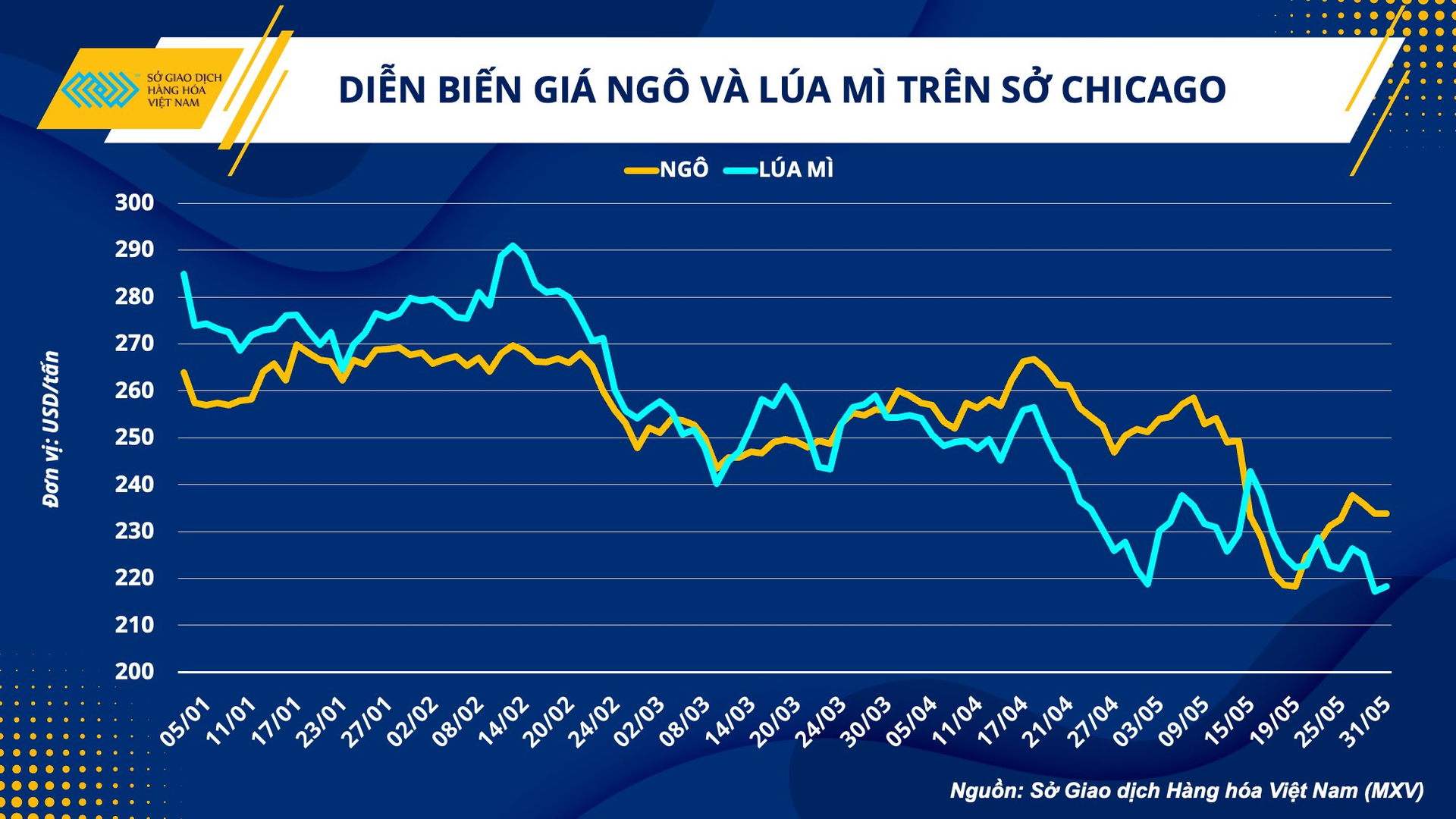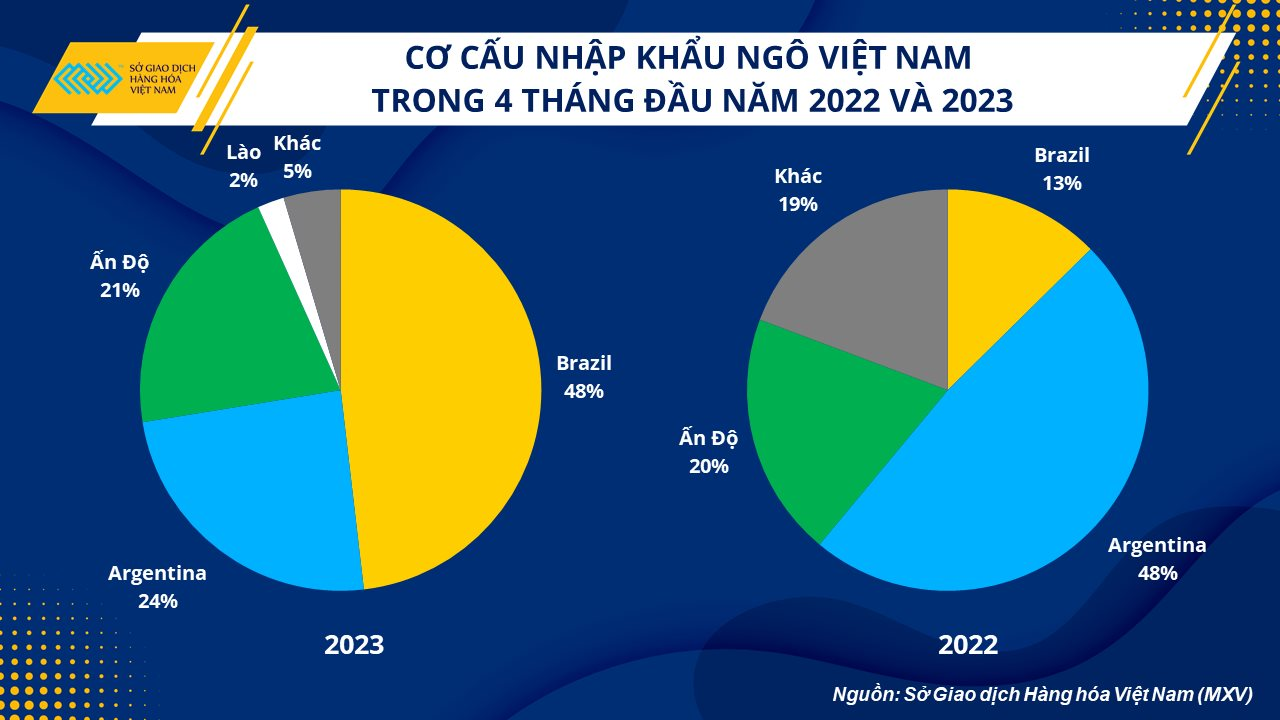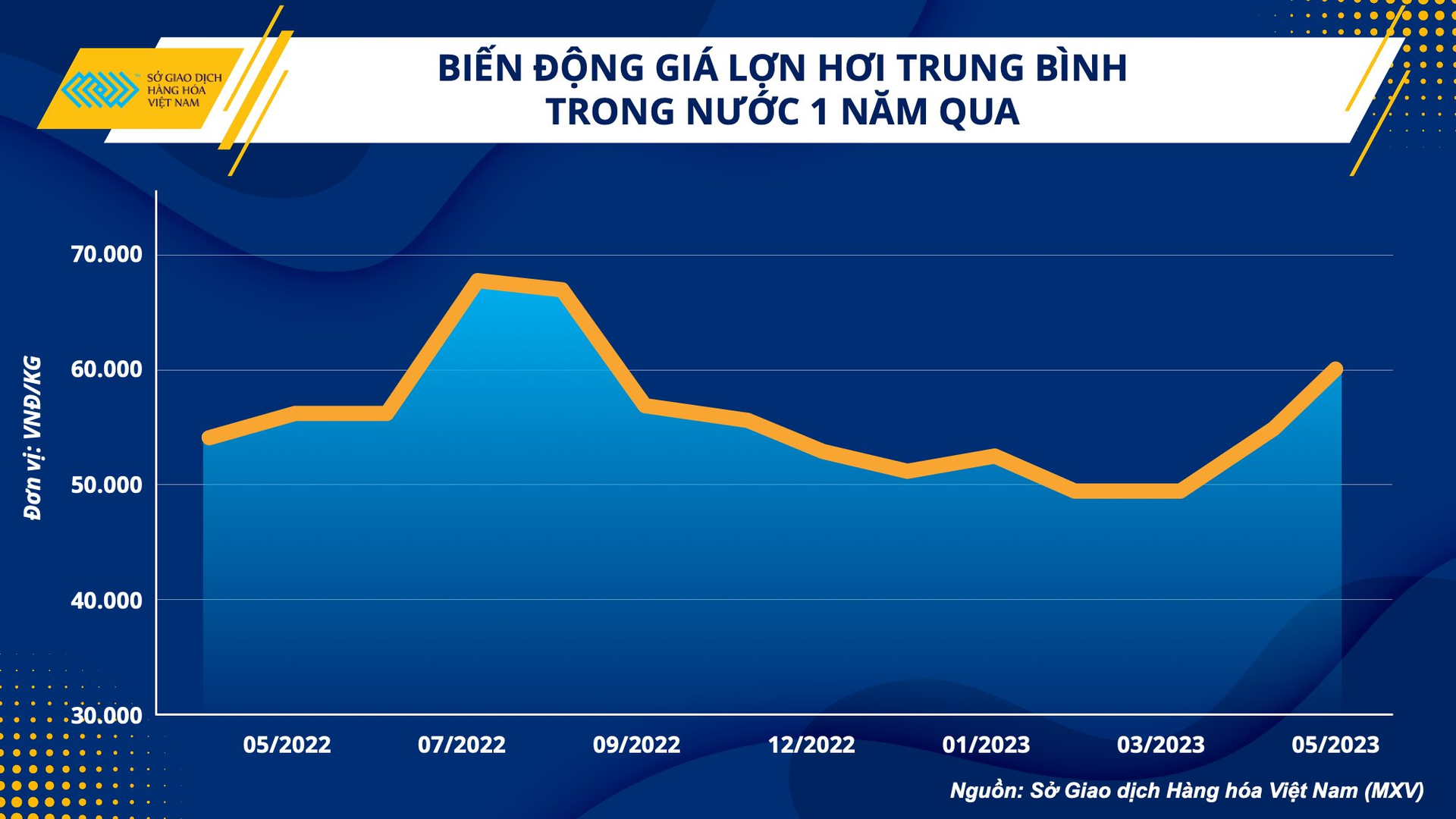According to the Vietnam Commodity Exchange (MXV), among the four groups of raw materials and commodities, agricultural products have recorded the strongest decline in the past few months. Most of the prices of important animal feed ingredients such as corn, soybean meal, and wheat all decreased by 15 – 30% compared to the beginning of this year. This is a good sign for the livestock industry, which depends on the supply of imported raw materials of our country, especially after 2 consecutive years, businesses and livestock households have suffered losses due to both input costs and pressure. output.

However, a strong recovery has appeared in the last few sessions, which is making livestock businesses worry. Chicago corn prices last week recorded their biggest gain since July of last year and are trading at their highest levels in a month.
The supply from the domestic crop industry only meets more than 40% of the demand for raw materials for feed production. This also leads to the dependence of the livestock industry on the world agricultural market. Each year, Vietnam imports an average of 20-22 million tons of raw materials, according to preliminary data from the General Department of Customs. In which, corn accounts for about 50% and wheat accounts for about 10% of the above shipments.
The possibility that raw material prices will reverse and increase again in the next few months will be the top concern that businesses need to answer to make appropriate purchasing decisions for the second half of 2023.
Import of agricultural products is going bleak
The US Department of Agriculture (USDA) has forecast that our country’s corn consumption in the 2023/24 crop year will increase to 14.5 million tons, driven by demand from the livestock industry. Vietnam is one of the two countries with the fastest growing volume of maize imports in Southeast Asia and also the largest importer of maize in the region since the 2018/19 crop year. Since 2012, Vietnam has moved from the 19th largest maize importer to the 5th position in the world.
Although the consumption and import of corn or other feed materials tends to increase in recent years, along with the slow growth of the economy, the shipments of agricultural products arriving at our ports are quite gloomy. On the domestic market, the volume from July, August, September is enough for 70% of demand, factories do not have much room to buy more. For goods delivered at the end of this year and early next year, at Cai Lan port, the asking price of South American corn has now decreased in the range of 6,300 – 6,500 VND/kg.
Pham Quang Anh, Director of the Vietnam Commodity News Center, said: “Manufacturing businesses are expecting a further decline in world agricultural prices in the context of weakening world demand, and the US crop is still intact. favorable. In addition, the market is also waiting for more supply from India to arrive, which will also put pressure on domestic corn prices.”
According to data from the General Department of Customs, Brazil is the main market supplying corn to Vietnam in the first four months of 2023, accounting for over 48.2% of the country’s total corn imports. The second largest market is Argentina, in the first 4 months of 2023 reached 682,552 tons, down 45.2% over the same period last year.
Instead of importing corn from South America as before, India is a cheaper alternative. In the first 4 months of 2023, Vietnam imported 584,847 tons of Indian corn, up 15.6% over the same period in 2022.

The downtrend will continue in the second half of this year
The USDA said that as of May 28, 92% of corn acreage had been planted, and 72% of the crop had entered the germination stage. In terms of quality, 69% of maize acreage was rated good – excellent, lower than 73% in the same period last year. Concerns about the outlook for crop yields to be negatively affected as the US enters the peak heat period of the summer has supported a short recovery in prices and made agricultural prices more volatile in the next 2 months. .
In the coming time, the outlook for the global economy has not yet recovered, and demand from China is forecast to remain lower than in the previous two-year period. In the USDA’s weekly Export Sales report released last week, US sales volume even dropped to negative levels, due to China canceling some previously purchased orders.
In addition, coming soon, as Brazilian farmers prepare to harvest the second corn crop, which is forecast to reach record production levels, US exports will become even less competitive.
In terms of supply, in contrast to La Nina appearing in the past 3 years, causing damage to the South American crop, the possibility of an El Nino weather pattern is increasing and is a signal that the supply of agricultural products is promising. positive global. The US crop is also in its early stages with rapid progress and concerns about the actual weather still being an annual phenomenon, so agricultural prices are likely to come under pressure in the second half of the year.
Will the livestock industry recover?
Besides high production costs, low pork prices and disease are also threats that have hindered the livestock industry’s growth in the first half of 2023. Recently, the hog market has been active again and forecast for a positive outlook for the output of livestock enterprises. In the last days of May, the price of live hog at one point exceeded 60,000 VND/kg, an increase of 17% compared to the beginning of the year.

For two consecutive years, the cost of feed has increased, the price of pigs has decreased, leading to many farmers suffering losses and having to stop re-herding activities. The volume of pigs sold off to the market due to the impact of the African swine fever epidemic has gradually decreased, so the pressure on meat supply to the market has also lessened. The supply is decreasing and the purchasing power is increasing again, helping the hog price to gradually recover.
“The price of animal feed ingredients in the world market is cooling down, while the shipping fee to Vietnam is also decreasing because crude oil prices have also dropped sharply recently. Along with that, the price of output products also shows signs of increasing, which will be positive signals for the livestock industry in the second half of 2023, after 2 years of going through a difficult period, “said Pham Quang Anh. price.
